Before you get in the water this summer, take a peek at the many ocean mysteries lurking below
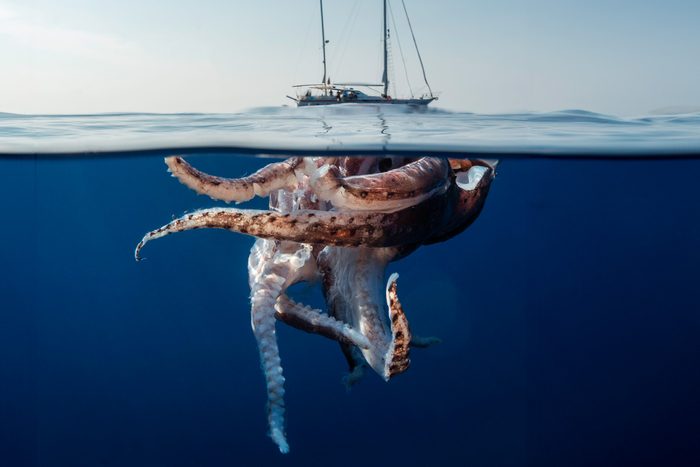
14 Mysteries of the Ocean Scientists Still Can’t Explain

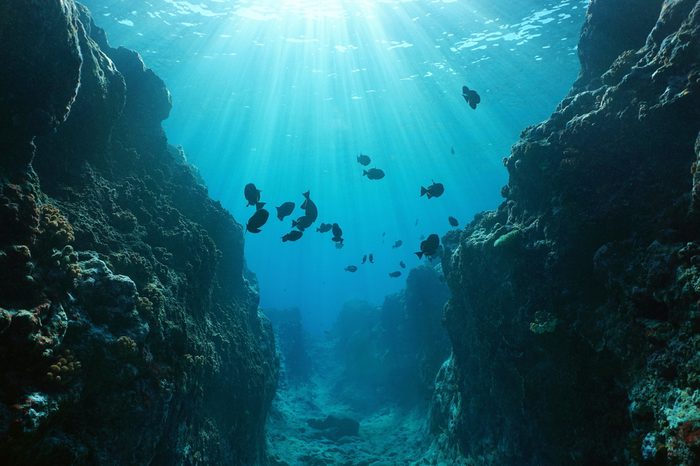
The ocean floor
What is the greatest mystery in the ocean? It might be the ocean floor itself. Although the oft-heard statistic is that we know more about the surface of Mars than we do about the ocean seabed, scientists have been able to indirectly map the entire ocean floor—but the resolution is incredibly poor, so we can only visualize features larger than three miles, which leaves a lot still to be discovered. Ongoing research like Seabed 2030 aims to bring the ocean floor into greater focus, including some of the most stunning deep-sea sights in the world, so we can better see and understand what’s really down there.

Milky sea phenomenon
For hundreds of years, sailors have reported randomly encountering a strange “milky” cast to the sea as far as the eye can see, but scientists have been unable to explain this ocean mystery—or even know for sure if it was real. In 2006, researchers were able to capture a satellite image of a milky sea, and several years later, experiments discovered that the glow was likely from bioluminescent bacteria that attract fish in order to be eaten and survive in their guts. But scientists still aren’t sure how or why the bacteria gather in such huge numbers as to be able to be seen from space. In addition, their glow is continuous, unlike the more commonly seen “dinoflagellate” organisms that produce brief flashes of light.

Purple orb
In 2016, researchers from Ocean Exploration Trust (founded by oceanographer and Titanic discoverer Robert Ballard) aboard the Exploration Vessel Nautilus found a strange purple blob on the ocean floor off California. The snapshot of the purple orb may not be one of the most beautiful underwater photos ever taken, but it’s certainly one of the weirdest. Stumped scientists joked about it being a spider egg sac or a “tiny momma octopus”—then nicknamed it Blobus purpilis before battling with a crab to retrieve the specimen. It looks kind of like a strange and mesmerizing jellyfish. Research is ongoing as to what the orb is, but it’s hypothesized to be a new species of velutinids, a type of snail.
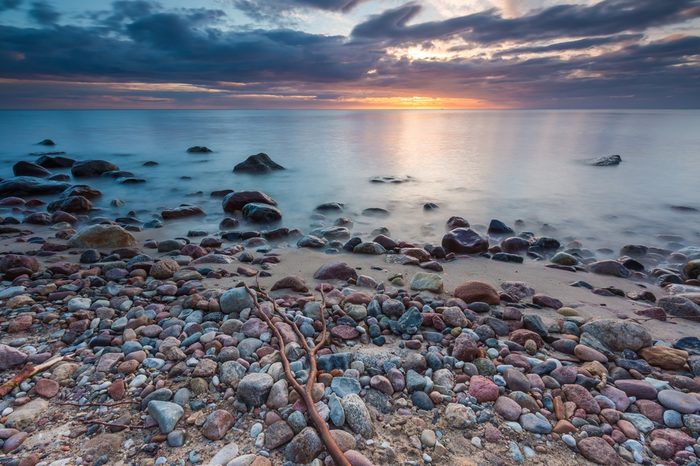
Baltic Sea anomaly
Could there be an alien spaceship on the ocean floor? In 2011, ocean explorers found an oval-shaped object with strange markings on the bottom of the Baltic Sea. The resulting “images”—which were really created by a graphic artist—of the otherworldly discovery quickly made the rounds on the Internet (the only real visualization is a grainy sonar image). Scientists think the anomaly is actually a glacial deposit or some other natural formation, but its origins are uncertain pending further exploration.

Giant squid
What is the rarest thing to find in the ocean? An animal you’d think would be too big to hide. The giant squid could be the mythical kraken featured in Pirates of the Caribbean and Jules Verne’s 20,000 Leagues Under the Sea. Although it’s unlikely that the giant squid actually attacked ships, very little is known about this mysterious creature of the deep. It wasn’t even photographed alive until 2004, and it wasn’t filmed until several years later, when it was caught at the surface. Underwater video was not accomplished until 2012.
Scientists have learned virtually nothing about the lives of these deep-sea giants, not even how big they get, although some estimates predict they grow up to 66 feet. Their cousin the colossal squid can grow up to 45 feet, but even less is known about them: A colossal squid was filmed for the first time in 2025, and it was only a 1-foot-long baby. The adult remains a mystery of the ocean.

Undersea geology
We might not know much about the terrain of the ocean, but what we have seen is just as stunning as what’s on land—and in fact, may be strikingly similar. “Brine pools,” where the saltwater concentration is greater than the surrounding ocean, create lake-like surfaces and shorelines. Earth’s largest waterfall is actually underwater in the Denmark Strait, where colder water tumbles over a huge drop in the ocean floor, falling 11,500 feet (the largest land waterfall is only 3,212 feet). Underwater volcanoes erupt—in fact, the largest one ever happened recently and scientists almost missed it. Although researchers know all these things exist, they remain perplexing science mysteries because their exact mechanisms are still being investigated.

Blue whales
These mysterious giants of the sea are the largest animal to live on earth—ever. But partially due to the whaling trade hunting them nearly to extinction, plus their slow reproduction, there just aren’t many of them out there to study. As a result, little is known about these elusive creatures, including how long they live, how far they migrate and what their songs mean, making them one of the ocean’s greatest mysteries. The animals’ shyness also makes them hard to observe. In 2017, a video of never-before-seen blue whale behavior off Sri Lanka caused controversy among experts as to whether the rolling and racing caught on camera was a mating ritual.
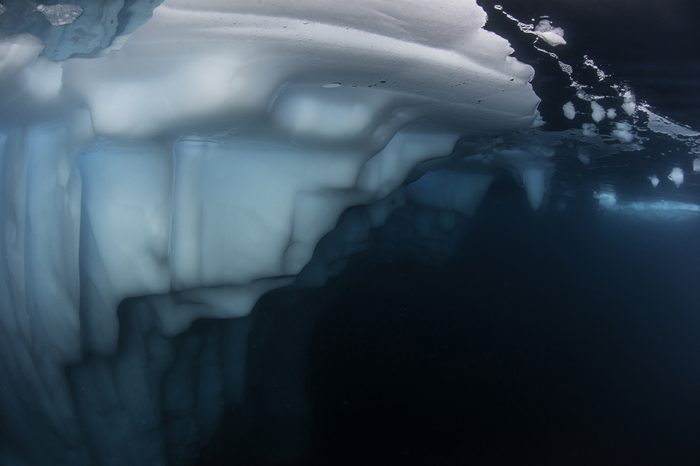
Bloop sound
Nothing like the mysterious “bloop” sound recorded in the South Pacific in 1997 had ever been heard before. It was very loud, low-frequency, and it had a unique pattern that made some think it was a newly discovered creature lurking in the depths. (It didn’t help that the sound came from near the location of HP Lovecraft’s fictional sunken city of R’yleh, where a creature called Cthulhu is imprisoned.) It’s always a good idea to keep facts about oceans straight from fiction, however, as researchers continued to look for the origin of the noise for years, until in 2005 they announced it had been an “icequake,” which occurs when icebergs break off glaciers.

“Immortal” jellyfish
Could this tiny jelly hold the secret to immortality? Smaller than a pinky nail, this sea creature has the Benjamin Button-like ability to revert back to a polyp stage when threatened with starvation or injury, earning it the nickname “immortal jellyfish” for how it outsmarts death. Although the species had been known about for 100 years, it wasn’t until the 1980s that this incredible phenomenon was discovered, and it still remains an ocean mystery. Scientists are still unsure exactly how its cells are able to regress and regrow, but the immortal jellyfish could hold promise for fighting diseases and healing damaged cells.
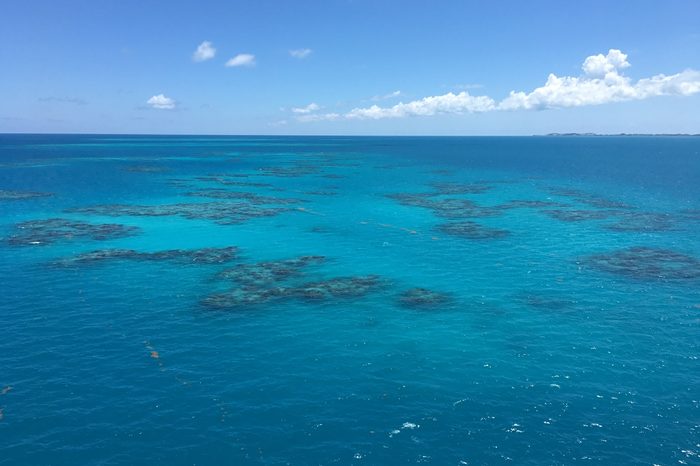
The Bermuda Triangle
The points of the so-called Bermuda Triangle are Miami, Puerto Rico and Bermuda—but don’t worry if you’ve booked a trip to any of those destinations. Despite the area being known for the unexplained disappearances of ships and planes, there really isn’t any evidence that it’s more dangerous than anywhere else in the world, or that there’s any supernatural phenomenon at work.
That said, the National Oceanic and Atmospheric Administration (NOAA) does admit there could be scientific reasons for the disappearances, such as the likelihood of hurricanes, rapid changes in weather due to the Gulf Stream and the numerous islands in the Caribbean that make for tricky navigation. NOAA also acknowledges that the area could possibly mess with navigational tools, making them point true north as opposed to magnetic north, or that “oceanic flatulence,” a burst of methane gas from the sea, could somehow have affected the vessels and planes.

Mariana Trench
What are the mysteries of the deep sea? We’re still discovering them through explorations of the Mariana Trench. This spot in the ocean off the Mariana Islands near Guam is the deepest point on earth—nearly 7 miles down. In comparison, Mount Everest is only 5.5 miles high. This little-explored area of the sea has only been visited by three people: two oceanographers in 1960, and filmmaker/ocean explorer James Cameron in 2012, in the first solo expedition.
In the trench, it’s completely dark and only a few degrees above freezing, with intense pressure of eight tons per square inch. But somehow marine life has managed to survive, even thrive, amid this natural wonder, though further research is needed into the unique ecosystem. And even though it’s so remote, it’s not immune to pollution: In 2018, researchers found evidence of a plastic bag in a database of images from the trench.

Giant oarfish
Could these be the sea monsters of yore? This snake-like creature, the longest bony fish on earth, can grow up to 56 feet and weigh 600 pounds. But because they live at depths around 3,300 feet, not much is known about the rarely-seen-alive creature. Two dead oarfish were found on California shores in 2013, prompting scientists to wonder if ominous forces were at work to beach the normally deep-sea animals, as they have been rumored to wash up before earthquakes. The incident turned out to be a boon for scientists, who were able to study the specimens—since they don’t even know how many species of the fish exist, DNA samples could help researchers figure that out.

The Yonaguni Monument
Are they man-made steps and ancient pyramids that sank in an earthquake, or natural rock formations? These mysterious structures in the water off the coast of Japan, nicknamed “Japan’s Atlantis,” have baffled scientists since they were found by a diver in 1987. Amazingly, scientists are still arguing about whether people or Mother Nature created the Yonaguni Monument, as well as whether markings in the stone are carvings of faces and animals or simply naturally made scratches. While it continues to puzzle researchers, it remains a popular dive spot with tourists.
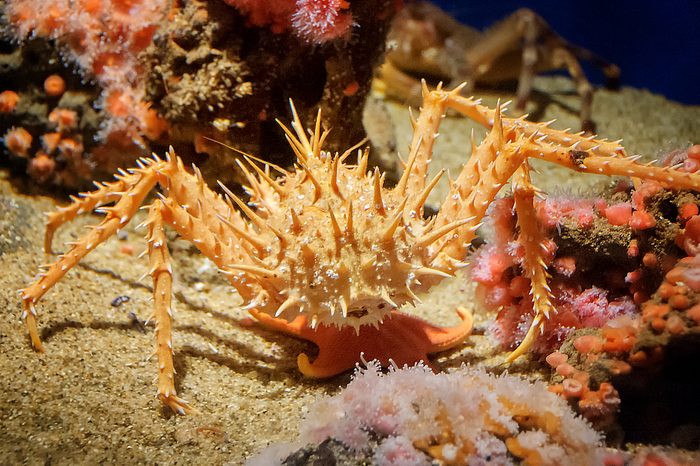
The Abyss
What is the most mysterious place in the ocean? It might be the Abyss. We’re not talking about James Cameron’s 1989 movie about researchers who find a deep-sea civilization—rather, scientists are traveling to the real-life abyss, the area between 13,000 and 20,000 feet under the surface, to discover new marine life. A recent expedition near Australia located hundreds of new species, as well as little-known creatures like the “faceless fish” that hasn’t been seen here since 1873. Other rare specimens the scientists collected include the spiny king crab, the monkey brittle star, the smooth-head Blobfish (yes, that’s its real name) and the deep-sea lizard fish. Who knows what other unsolved planet-earth mysteries are down there? We sure don’t, but we’re eager to find out.
Why trust us
At Reader’s Digest, we’re committed to producing high-quality content by writers with expertise and experience in their field in consultation with relevant, qualified experts. We rely on reputable primary sources, including government and professional organizations and academic institutions as well as our writers’ personal experiences where appropriate. We verify all facts and data, back them with credible sourcing and revisit them over time to ensure they remain accurate and up to date. Read more about our team, our contributors and our editorial policies.
Sources:
- The Conversation: “Just how little do we know about the ocean floor?”
- Seabed2030: “Our Mission”
- Proceedings of the National Academy of Sciences: “Bacterial bioluminescence as a lure for marine zooplankton and fish”
- Latz Laboratory, University of California San Diego: “Dinoflagellates”
- Ocean Exploration Trust: “Nautilus Live”
- E/V Nautilus: “Mysterious Purple Orb”
- LiveScience: “‘Mysterious’ Baltic Sea Object Is a Glacial Deposit”
- The Natural History Museum: “Sea monsters and their inspiration: serpents, mermaids, the kraken and more”
- Proceedings of the Royal Society B: “First-ever observations of a live giant squid in the wild”
- Nature: “Giant squid filmed in its natural environment”
- Smithsonion National Museum of Natural History: “Giant Squid”
- Schmidt Ocean Institute: “First Confirmed Footage of a Colossal Squid—and it’s a Baby!”
- E/V Nautilus: “Brine Pool: Hot Tub of Despair”
- National Ocean Service: “Where is Earth’s Largest Waterfall?”
- National Oceanic and Atmospheric Administration: “Deep Ocean Volcanoes”
- Science Advances: “The largest deep-ocean silicic volcanic eruption of the past century”
- National Oceanic and Atmospheric Administration: “Blue Whale”
- The Natural History Museum: “Blue Whale Hall: What’s Left to Learn”
- National Geographic: “Mysterious Blue Whale Behavior Likely Filmed for First Time”
- National Ocean Service: “What is the bloop?”
- Wired: “The Bloop mystery has been solved: it was never a giant sea monster”
- The Natural History Museum: “Immortal jellyfish: the secret to cheating death”
- American Museum of Natural History: “Immortal Jellyfish”
- National Ocean Service: “What is the Bermuda Triangle?”
- National Geographic: “Breaking Mariana Trench Dive”
- National Oceanic and Atmospheric Administration: “2016 Deepwater Exploration of the Marianas”
- Marine Policy: “Human footprint in the abyss: 30 year records of deep-sea plastic debris”
- National Geographic: “5 Surprising Facts About the Oarfish That Has Been Washing Up on Beaches”
- Nature: “Oarfish’s misfortune is scientists’ boon”
- LiveScience: “Giant oarfish: The ‘doomsday’ fish of legend that supposedly foreshadows earthquakes”
- Britannica: “Yonaguni Monument”
- BBC: “Japan’s mysterious underwater ‘city'”
- Short Wave, National Public Radio: “Explorers Probing Deep Sea Abyss Off Australia’s Coast Find Living Wonders”
- Australian Geographic: “In pictures: creatures of Australia’s deep-sea abyss”




















